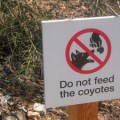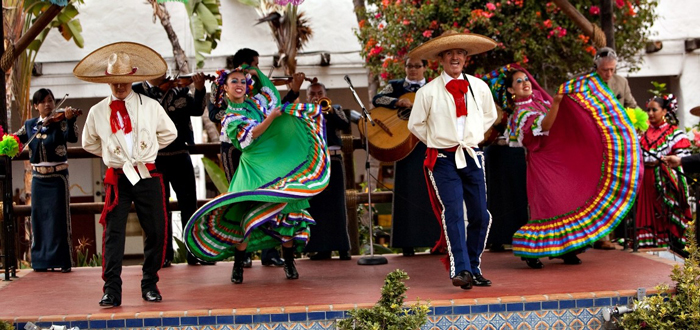The hunt will go on—but will the dogs get to come along? That depends on whether or not Gov. Jerry Brown signs or scraps a proposed state law that aims to prohibit bear and bobcat hunters from using hounds to chase and tree their quarry.
Animal-rights activists have been backing the bill—SB 1221—since it was introduced early this year by Southern California State Senator Ted Lieu, while some hunting groups are firmly opposed to what they say is a bill that could strip them of a traditional pastime.
Hound hunting involves unleashing a group of trained hunting hounds to chase bears, big cats, raccoons, foxes and other mammals and, usually, run them up a tree or into a confined space. The sport is perhaps best known in its stodgy English form, in which horseback riders trail their howling hounds as they chase red foxes to exhaustion. The United Kingdom banned hound hunting last decade.
In California, black bears are a primary target of hunters and their hounds. Licensed sport hunters in California kill as many as 1,700 bears each year, about half of which are taken with the assistance of hounds, according to Patrick Foy, a Department of Fish and Game warden.
For many hunters, however, just treeing the quarry, and then walking away, is the pinnacle of the hunt, according to Josh Brones, president of the California Houndsmen for Conservation. Brones frequently hunts bears with his dogs in the Sierra foothills—but he does so for the thrill of the chase alone, he says, and usually does not even bring a gun. He says that such “catch-and-release” hunting is popular among many hunters.
Some activists consider the activity, whether the target animal is shot or released, to be wildlife harassment. Jennifer Fearing, the California director of the Humane Society of the United States, notes that most pet owners are either prohibited from bringing their animals into public lands or are required to keep them leashed.
“This bill would just bring these hunters under the same umbrella of law that the rest of the state’s dog owners have been under for years,” she says.
Researchers often rely on houndsmen and their trained dogs to help them capture, tag and release animals like bears and cougars. Rick Hopkins, a conservation ecologist at the San Jose environmental consulting firm Live Oaks Associates, Inc., once participated in a study of San Jose area mountain lions, which are protected by law from sport hunters. Hopkins used hounds to tree the cougars before the animals were tranquilized and fitted with radio collars.
Not all these hunts went smoothly. Once, a dog died of heat exhaustion, Hopkins says, and of the 30 cougars that he saw treed and radio-collared, “there were a few individuals that were mauled by the dogs before we could get there,” he says. Hopkins adds that he knows of a research project, too, in which dogs caught and killed a cougar kitten during one particular chase.
Hopkins, who hopes to see SB 1221 become law, says he believes hound hunting, whether by scientists or sport hunters, can have adverse impacts on both nontarget wildlife species and the quarry animals. Even catch-and-release hunting, Hopkins says, is stressful on bears, and he says that in counties of particularly heavy bear hunting—Trinity, Siskiyou, Humboldt, Shasta—one animal is likely to be chased up a tree multiple times per season, which usually lasts about three months beginning in October.
Of the 32 American states that currently allow black bear hunting, 14—including Pennsylvania, Oregon, Colorado and Washington—prohibit the use of hounds. Montana also forbids bear hunters from following dogs—though not because the practice is considered unsporting, according to Brones. He says the only reason that the state outlawed hound hunting of bears in 1921 was to protect hunters’ dogs from grizzly bears, which often face off with hunting dogs and fight back, rather than run away, as black bears tend to do.
“They weren’t concerned with whether it was a fair chase or not,” Brones explains. “They were basically trying to protect dogs from getting killed by grizzly bears. That’s why they still allow houndsmen to hunt other species [like bobcats and cougars].”
Wade Derby, a hunter based in the East Bay, opposes Sen. Lieu’s bill, arguing that hound hunting allows hunters to harvest bears more selectively and run less of a risk of killing mother bears, whose cubs may be momentarily unseen.
“Hunters don’t want to kill just any bear, and rather than just shoot a bear through the trees in a forest, hunters using dogs get to see the bear first and look at it and decide if they should shoot it,” Derby says. As well as female bears, many hunters, Derby says, prefer not to shoot male bears in the prime of their reproductive years and, instead, aim for older animals. “[Hound hunting] is a humane and effective way to make sure we’re taking the right animal,” he adds.
SB 1221 makes specific exemptions for the retriever dogs while bird hunting, as well as the use of hounds in depredation hunts of problematic or dangerous wild animals.
The bill would also allow the use of hunting dogs by researchers. However, abolishing most recreational hound hunting would likely cause many houndsmen to abandon their trade, leaving researchers unable to locate a dog pack if needed, according to Chris Wilmers, a field scientist at UC-Santa Cruz.
Wilmers, who specializes in mountain lion research, sent a letter to the state senate and assembly on May 8, 2012, expressing concern that Senator Lieu’s bill could disrupt ongoing research projects. If the bill becomes law, he writes, “Where will the next generation of hounds-men and women come from to help us with our research and conservation efforts?”
Wilmers also believes that the presence of trained hounds in the California wilderness fills a unique ecological niche, left vacant when the wolf was eradicated from California. The elusive nature of mountain lions and bears, he says, is kept honed and maintained by houndsmen and their dogs.
Gov. Brown is expected to decide on the bill by Sept. 30.

 Oktoberfest in San Jose
Oktoberfest in San Jose  SJ Q&A: Heather Lerner, Happy Hollow Foundation
SJ Q&A: Heather Lerner, Happy Hollow Foundation 









